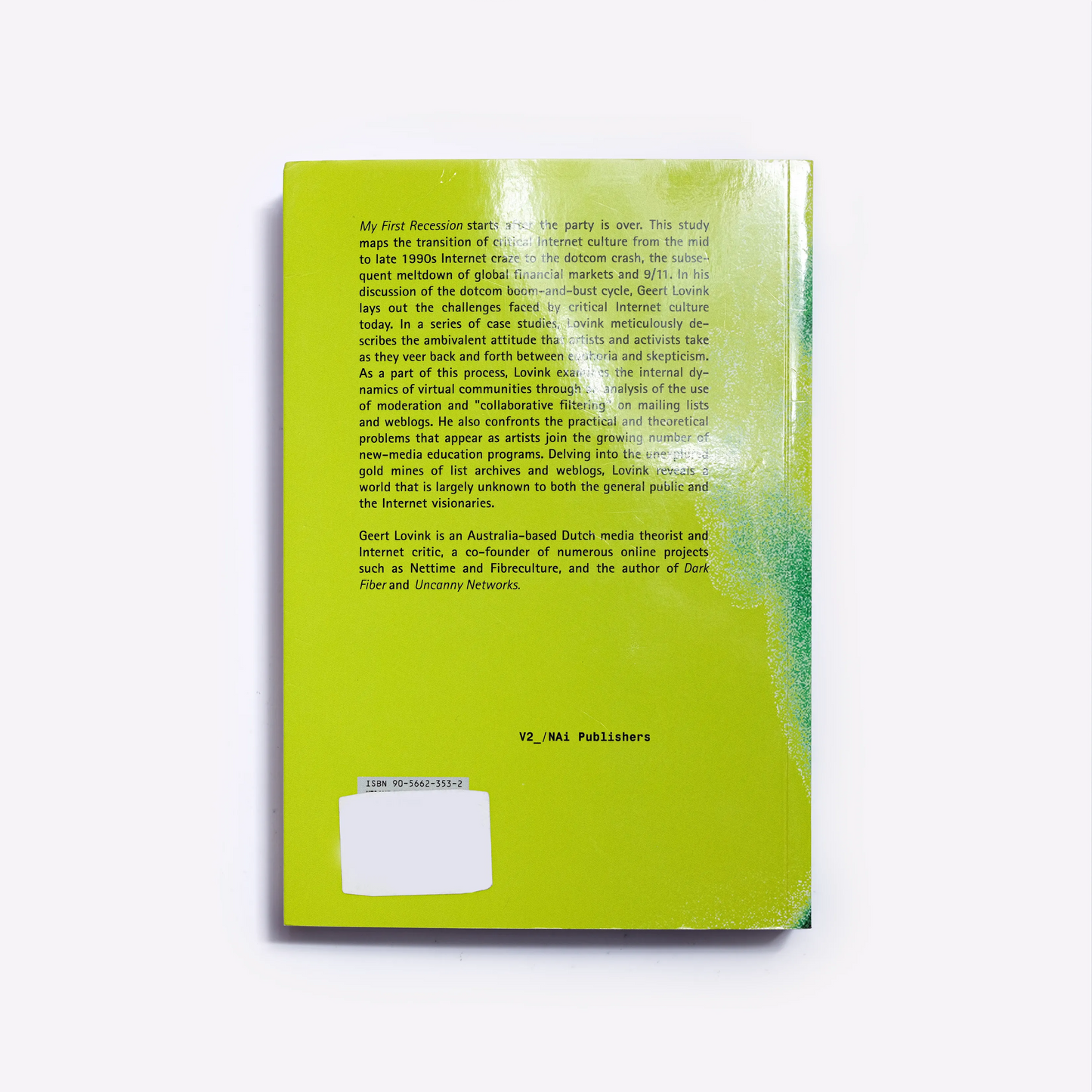My First Recession
My First Recession
Couldn't load pickup availability
Title: My first recession
Author: Geert Lovink
Issued: 2003
Genre: Theory
Language: English
Type: Paperback
Pages: 296
Dimensions: 14 x 20 cm
ISBN/EAN: 90-5662-353-2
Design: Joke Brouwer
In My First Recession, Geert Lovink maps the transition of critical Internet culture from the mid-1990s Internet craze to the dot-com crash, the subsequent meltdown of the global financial markets, and 9/11. In his discussion of the dot-com boom and bust cycle, he lays out the challenges faced by critical Internet culture today.
In a series of case studies, Loovink meticulously describes the ambivalent attitude that artists and activists take as they veer back and forth between euphoria and skepticism. As part of this process, Lovink examines the internal dynamics of virtual communities through an analysis of the use of moderation and "collaborative filtering" on mailing lists and weblogs. He also confronts the practical and theoretical problems that appear as artists join the growing number of new media educational programs. Delving into the unexplored gold mines of list archives and blogs, Lovink reveals a world that is largely unknown to both the general public and the Internet visionaries.
Geert Lovink is an Amsterdam based media theorist and Internet critic, a cofounder of numerous online projects such as Nettime and Fibreculture, and the author of Dark Fiber (2002), Uncanny Networks (2002) and Zero Comments (2008).
Contents
Introduction
Currents in Critical Internet Culture
Post-Speculative Internet Theory
Three Positions: Dreyfus, Castells, Lessig
Anatomy of Dotcom Mania
Overview of Recent Literature
Deep Europe and the Kosovo Conflict
A History of the V2_East/Syndicate Network
Principles of Streaming Sovereignty
A History of the Xchange Network
The Battle over New-Media Art Education
Experiences and Models
Oekonux and the Free-Software Model
From Linux to the GPL Society
Defining Open Publishing
Of Lists and Weblogs
Conclusion
Boundaries of Critical Internet Culture
Notes
Bibliography
Acknowledgments




